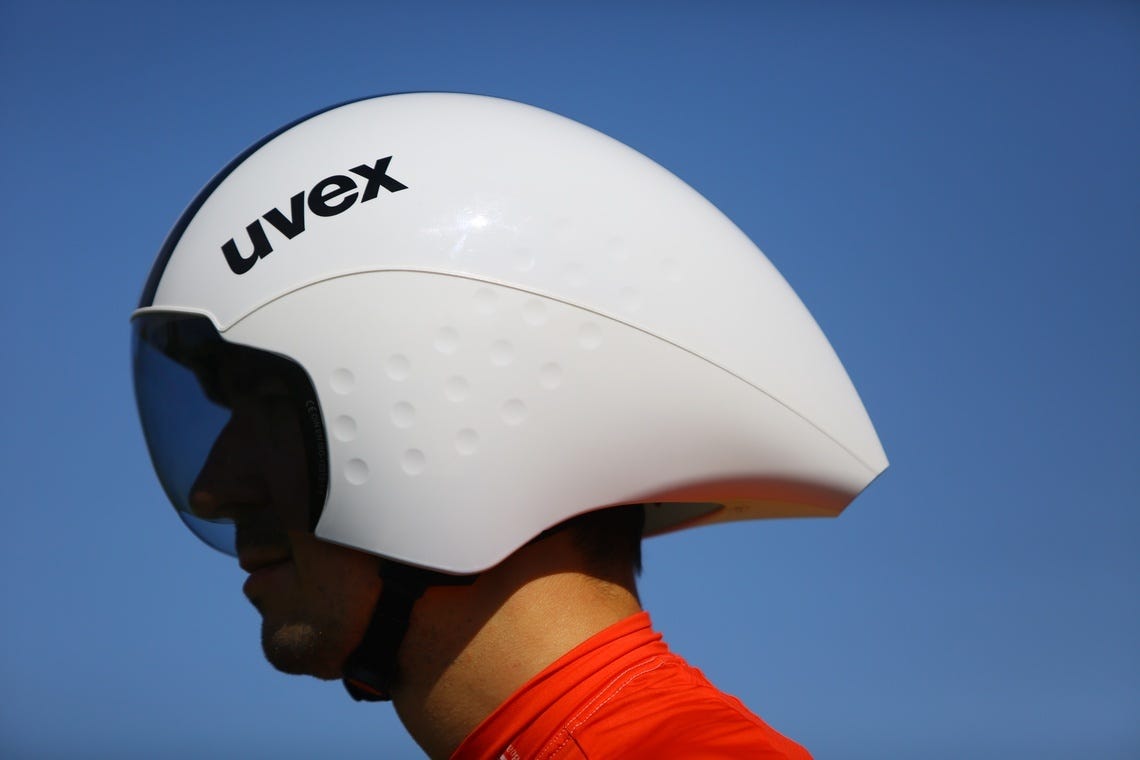The Ultimate Guide to Triathlon Helmets: Sprint, Olympic, and Long-Distance
When it comes to triathlon gear, helmets are often overlooked despite their critical role in performance, comfort, and safety. Let's explore helmets and which one to choose for the right goal.
After the last post on aerodynamics when it comes to socks, I wondered “Why I am talking about socks before talking about helmets?”. The right helmet can save you precious seconds, enhance comfort during long rides, and ensure compliance with safety standards. - the real deal breaker when it comes to aero.
We’ll explore triathlon helmets tailored for sprint, Olympic, and long-distance events, compare popular models, and analyze their aerodynamics, comfort, and price.
Types of Triathlon Helmets
Triathlon helmets can be broadly categorized into three types:
Road Helmets: Versatile and comfortable, often used by beginners or for technical courses.
Aero Road Helmets: A hybrid of road and time trial helmets, balancing aerodynamics and ventilation.
Time Trial (TT) Helmets: Designed for maximum aerodynamic efficiency, ideal for flat, straight courses.
Sprint Triathlon Helmets
Sprint triathlons are short and intense, typically involving a 20 km bike ride. Athletes prioritize speed, agility, and transitions.
Key Features:
Lightweight for quick acceleration.
Easy to put on and take off during transitions.
Moderate aerodynamics, as the bike leg is shorter.
Recommended Helmets:
Giro Syntax: A lightweight road helmet with good ventilation and a budget-friendly price.
Specialized Echelon II: Offers a balance of comfort and aerodynamics for beginners.
Bontrager Velocis MIPS: An aero road helmet with enhanced safety features.
Pros and Cons:
Aerodynamics: Less critical due to shorter bike legs.
Comfort: High priority for sprint triathletes.
Price: Typically lower compared to long-distance helmets.
Olympic Triathlon Helmets
The Olympic distance involves a 40 km bike ride, requiring a balance between speed and endurance.
Key Features:
Aerodynamics become more important.
Ventilation to manage heat buildup during longer efforts.
Slightly more robust padding for comfort.
Recommended Helmets:
POC Ventral Air Spin: A lightweight aero road helmet with excellent ventilation.
Kask Utopia: Balances aerodynamics and comfort, with a sleek design.
Giro Aerohead MIPS: A semi-TT helmet offering a good mix of aero gains and ventilation.
Pros and Cons:
Aerodynamics: Plays a significant role in reducing drag.
Comfort: Essential for maintaining performance over longer rides.
Price: Mid-range to high-end, depending on features.
Long-Distance Triathlon Helmets
For long-distance triathlons like Ironman events, the bike leg can stretch up to 180 km. This demands a helmet that excels in aerodynamics, comfort, and heat management.
Key Features:
Maximum aerodynamic efficiency to save watts over long distances.
Excellent ventilation to prevent overheating.
Superior padding and fit for prolonged comfort.
Recommended Helmets:
Specialized S-Works TT: A top-tier TT helmet designed for elite aerodynamics.
MET Codatronca: Combines aero performance with good ventilation.
Lazer Vento KinetiCore: Features cutting-edge aerodynamics and comfort for endurance athletes.
Pros and Cons:
Aerodynamics: Crucial for reducing energy expenditure.
Comfort: Must prevent pressure points and overheating.
Price: Premium models with advanced features.
Comparison: Aerodynamics, Comfort, and Price
Sprint Helmets: Moderate aerodynamics; designed for short, technical courses. Lightweight and ventilated for short rides. €50–€150
Olympic Helmets: Improved aerodynamics; aero road designs are common. Balanced ventilation and padding for mid-range distances. €150–€300
Long-Distance Helmets: Exceptional aerodynamics, often with TT-specific designs and wind tunnel testing. Superior comfort and ventilation for prolonged rides. €300–€600+
Aerodynamics: Backed by Data
Aerodynamics plays a critical role in triathlon performance, especially for Olympic and long-distance events. Studies have shown that the helmet accounts for up to 20% of total drag on a cyclist. Key findings include:
Wind Tunnel Studies:
Research from the Journal of Sports Engineering and Technology highlights that TT helmets like the Uvex Race 8 can reduce drag by up to 7% compared to road helmets.Real-World Testing:
A study by AeroCoach found that switching from a standard road helmet to an aero road helmet can save approximately 10 watts at 40 km/h. 📈Impact on Speed:
Over a 180 km bike leg, using a TT helmet could save up to 6–8 minutes, depending on conditions and the athlete's position.
Comfort: The Long-Haul Factor
Padding and Fit: Helmets like the Kask Protone prioritize fit, with adjustable retention systems and memory foam padding.
Ventilation: Long-distance helmets, such as the MET Codatronca, incorporate large vents and internal channels to improve airflow.
Weight: Lightweight designs reduce neck strain over long rides.
Price: Investing Wisely
Entry-Level Helmets: Suitable for beginners or budget-conscious athletes, offering basic aerodynamics and comfort.
Mid-Range Helmets: Ideal for Olympic-distance triathletes, balancing performance and cost.
Premium Helmets: For serious long-distance athletes, these helmets feature advanced materials, wind tunnel testing, and cutting-edge designs.
Conclusion: Choosing the Right Helmet
Your choice of triathlon helmet should align with your event distance, goals, and budget. For short sprints, prioritize comfort and ease of use. For Olympic distances, balance aerodynamics and ventilation. For long-distance races, invest in a high-performance TT helmet that offers the best combination of aerodynamics, comfort, and heat management.
Recommended Resources
Journal of Sports Engineering and Technology: Aerodynamics in Cycling
If you’re ready to upgrade your helmet, start by testing models to ensure the perfect fit and performance for your next race.





